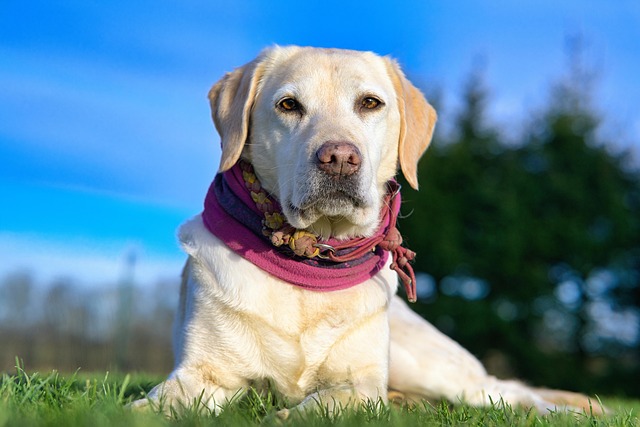
How do i train my dog to be obedient?
Watching your dog dart across the park ignoring your calls isn’t just frustrating—it can put them at risk near busy streets or public spaces.
Ensuring that dogs can return home obediently when they go out is a goal that every dog pooper hopes to achieve in their daily life. This not only concerns the safety of dogs, but also reflects a good relationship between humans and pets. Training a dog to go home is not an easy task, it requires us to invest time, patience, and love.
Understanding the behavioral habits of dogs is the foundation of training. Dogs are animals with a keen sense of smell and hearing, relying on these senses to perceive the world around them. At the same time, dogs have a strong dependence and trust in their owners, and making good use of these characteristics can make training more efficient.
In the early stages of training, it is necessary to set a clear home command for the dog, such as "go home". This instruction should be simple, clear, and easy for dogs to understand and remember. Every time you prepare to take your dog home, gently and firmly say this command, allowing the dog to gradually associate the command with the behavior of going home.
When dogs are outdoors, various new things in the environment will attract their attention, which is a major challenge in training. At the beginning, do not choose a training location that is too complex and noisy. You can start from your own yard or a quiet corner of the community. There is relatively less interference here, and dogs are more likely to concentrate and follow your instructions.
Once the dog makes a movement towards home, even if it's just a small step, it should be rewarded in a timely manner. The reward can be its favorite snacks, enthusiastic caresses, or language full of praise. Dogs are very intelligent animals, they can quickly understand that such behavior can earn the love and reward of their owners.
As the training progresses, the difficulty can gradually increase, the distance between the dog and home can be extended, or training can be conducted in slightly more complex environments. But it should be noted that the difficulty should not be too high each time, and the dog should have a process of adaptation. For example, if you trained downstairs in the community before, you can try to do it at the entrance of the community next time, but don't take it to a strange place far away from home all at once.

Patience is the most crucial quality during the training process. Dogs may not obey commands due to their playfulness or attraction to other things, so do not beat or scold them at this time. Beating and scolding will only make dogs feel scared and confused, and undermine the trust relationship between you two. On the contrary, it is important to remain calm, repeat the instructions again, and guide the dog to make the right behavior.
In addition to commands and rewards, dogs can also use their familiarity and sense of security at home to enhance training. After the dog returns home, give it a warm and comfortable nest to rest and play in, allowing it to truly feel that home is a safe and warm place. In this way, dogs will be more willing to take the initiative to go home.
Meanwhile, consistency is also very important. Every member of the family should use the same instructions and training methods, otherwise the dog will feel confused and unsure of what to do correctly. Moreover, training should be carried out persistently, and dogs should not fish for three days or sunbathe for two days. Only by continuously strengthening training can dogs truly develop the good habit of returning home as soon as they hear instructions.
After the dog has mastered the basic home skills, occasional small tests can be conducted. For example, in a familiar place, let it play freely for a while, then give the command to go home and see if it can react quickly and return to your side. If a dog performs well, it should be given more generous rewards to let it know that it has done a great job.
Training a dog to go home is not just about teaching it a skill, but also about establishing a deep emotional connection. In this process, we can gain a deeper understanding of the dog's personality, preferences, and needs, and the dog can also feel our care and love for it. Every moment when the dog hears the command and runs home happily, it is the most beautiful reward for our love and patience. Watching the dog safely stay by my side, the sense of happiness is indescribable in words. So, let's embark on a warm journey of training dogs to go home with full love and professional methods, so that dogs can find their way home at any time under our care.

Watching your dog dart across the park ignoring your calls isn’t just frustrating—it can put them at risk near busy streets or public spaces.

New puppy owners often find themselves rushing to clean up accidents before they set in, and that’s where puppy pad training becomes a game-changer.

If you've noticed your dog's waistline disappearing and your veterinarian has mentioned those few extra pounds, your first instinct might be to simply reduce the amount of food in their bowl.

Training a dog to use a designated spot indoors isn’t as daunting as many new owners fear, but it does take consistency and an understanding of your pet’s needs.

That moment of dread on a walk is all too familiar for many new dog owners. You see another dog approaching down the sidewalk of your neighborhood

If the sight of another dog on your neighborhood walk makes your heart sink as your own dog erupts into a frenzy of barking and lunging, you're not alone.